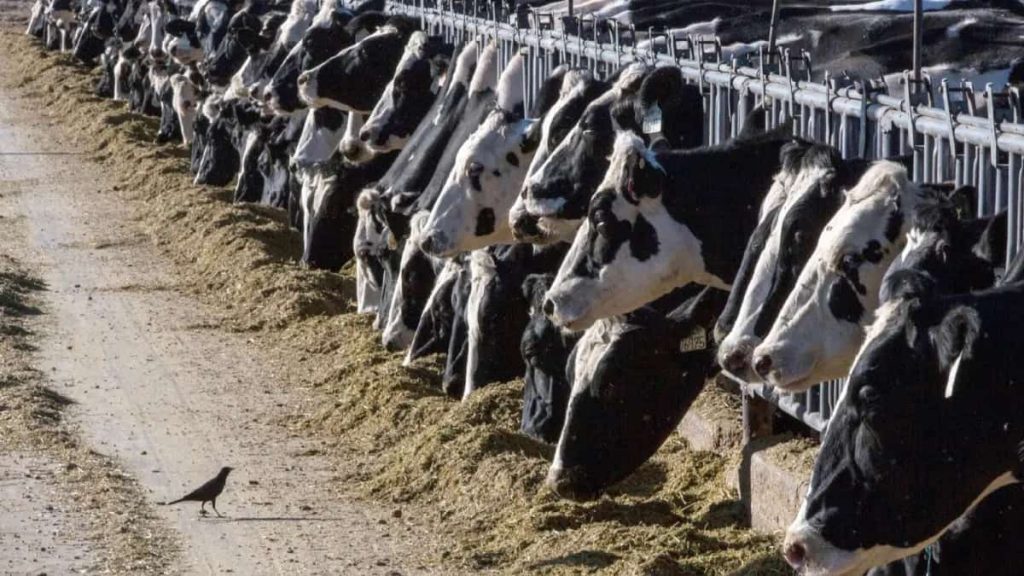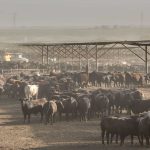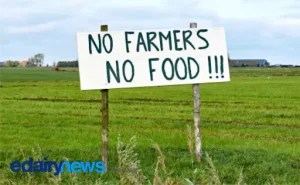
America’s farms don’t just run on corn and cattle. They also run on cash from the U.S. Department of Agriculture. Every year, the USDA spends billions of dollars to keep farmers in business. It hands out money to balance fluctuations in crop prices; it provides loans for farmers who want to buy livestock or seeds; and it pays growers who lose crops to drought, floods, and other extreme weather.
The agency is also now giving money — including $20 billion that Congress earmarked two years ago in the Inflation Reduction Act — to farmers trying to curb their greenhouse gas emissions and store carbon in soil, a key part of the Biden administration’s goal to cut the 10 percent of the country’s emissions generated by agriculture. That windfall of climate-smart farm funding has been widely lauded by climate activists and researchers.
But exactly how the USDA spends that money is more complicated — and contentious — than it might appear, and not simply because Republicans in Congress have threatened to siphon the funds away. A new report from the Environmental Working Group says that more than a dozen of the farming practices that the USDA recently designated as “climate-smart”— including several of the highest-funded ones — don’t actually have proven climate benefits. That finding is especially important, according to the group, because the USDA is likely to spend more money on the same practices in the years to come: Much of the $20 billion authorized by the Inflation Reduction Act has yet to reach farmers’ pockets.
Supporting farming techniques with uncertain benefits “undermines potentially real reductions in emissions,” said Anne Schechinger, author of the report and midwest director at the Environmental Working Group, an environmental research and advocacy organization. “If these unproven practices stay on the list, then a lot of money will go to these practices that likely aren’t going to reduce emissions.”
A USDA spokesperson said the agency uses a rigorous, scientific process to determine what it considers climate smart. Still, the agency acknowledges that not everything on its list necessarily has quantifiable benefits. New additions to the list are provisional — that is, they’re added “under the premise that they may provide benefits” and will be removed later on if those benefits can’t be quantified.
Schechinger analyzed spending by the USDA’s Environmental Quality Incentives Program, called EQIP for short, the agency’s biggest conservation program. She found that between 2017 and 2022 the program directed around $2 billion to techniques that were added provisionally to its climate-smart list for this fiscal year.
“It looks like a lot of money is going to climate-smart practices between 2017 and 2022 when, really, very little of the total EQIP money has actually gone to practices with proven climate benefits,” said Schechinger.
In particular, the group called into question eight of 15 methods that the Biden administration added provisionally, such as installing a waste facility cover or an irrigation pipeline. One of them — “waste storage facility,” a structure that holds manure and other agricultural waste — may even increase emissions, according to the report. The USDA spent about $250 million on them between 2017 and 2022.
The department specifies on its list that only a specific kind of waste storage facility, one that composts manure, counts as climate-smart. These composting structures can reduce methane emissions and improve water quality, the agency says.
“Unfortunately, EWG did not take into account the rigorous, science-based methodology used by USDA to determine eligible practices, nor the level of specificity required during the implementation process to ensure the practices’ climate-smart benefits are being maximized,” said Allan Rodriguez, a spokesperson for the USDA, in an emailed statement. “As a result, the findings of this report are fundamentally flawed, speculative, and rest on incorrect assumptions around USDA’s selection of climate-smart practices.”
Schechinger acknowledged that the USDA doesn’t define all waste storage facilities as climate-smart, but she said that the funding data she was able to obtain through a records request didn’t distinguish between specific facility types and that it “remains to be seen” whether the Inflation Reduction Act money will go only to the kind that composts manure.
Some researchers have argued that more studies need to be done on most “climate-smart” practices — even ones, such as planting cover crops, that the Environmental Working Group doesn’t question in its report — before anyone can say how much climate pollution they’re curbing or carbon they’re sequestering. “For most climate-smart management practices we do not yet have the data and information we need to understand when and where they are most likely to succeed,” said Kim Novick, an environmental scientist at Indiana University.
Most scientists agree that more data needs to be collected and analyzed to understand, say, the nuances of storing carbon in the soil. But some argue that climate change is just too urgent to delay action.
That’s one reason Rachel Schattman, a professor of sustainable agriculture at the University of Maine, supports the USDA’s use of climate funding. She also has confidence in the agency’s commitment to science. A practice doesn’t get put on the agency’s conservation list “without having demonstrated environmental benefits or reduced environmental harm,” she said. “Whether those benefits or reduced harms are related to climate change is something [the USDA] is grappling with in a really meaningful way right now.”
Schattman also said it’s important not to paint climate-smart practices with a broad brush. “Everybody’s farm is different. Everybody’s soil is different. Everybody’s microclimate is different,” she said. An irrigation pipeline in the Arizona desert might have a different effect on water and energy use than one on a farm in Vermont. Even if a practice here or there doesn’t reduce emissions or store carbon in the soil exactly how the USDA intends, Schattman said the influx of funding still could move agriculture in the right direction.
The Inflation Reduction Act created “a once in a lifetime opportunity for a lot of farmers,” she said. “I think it is going to make a lot of things possible that people couldn’t do before.”





















